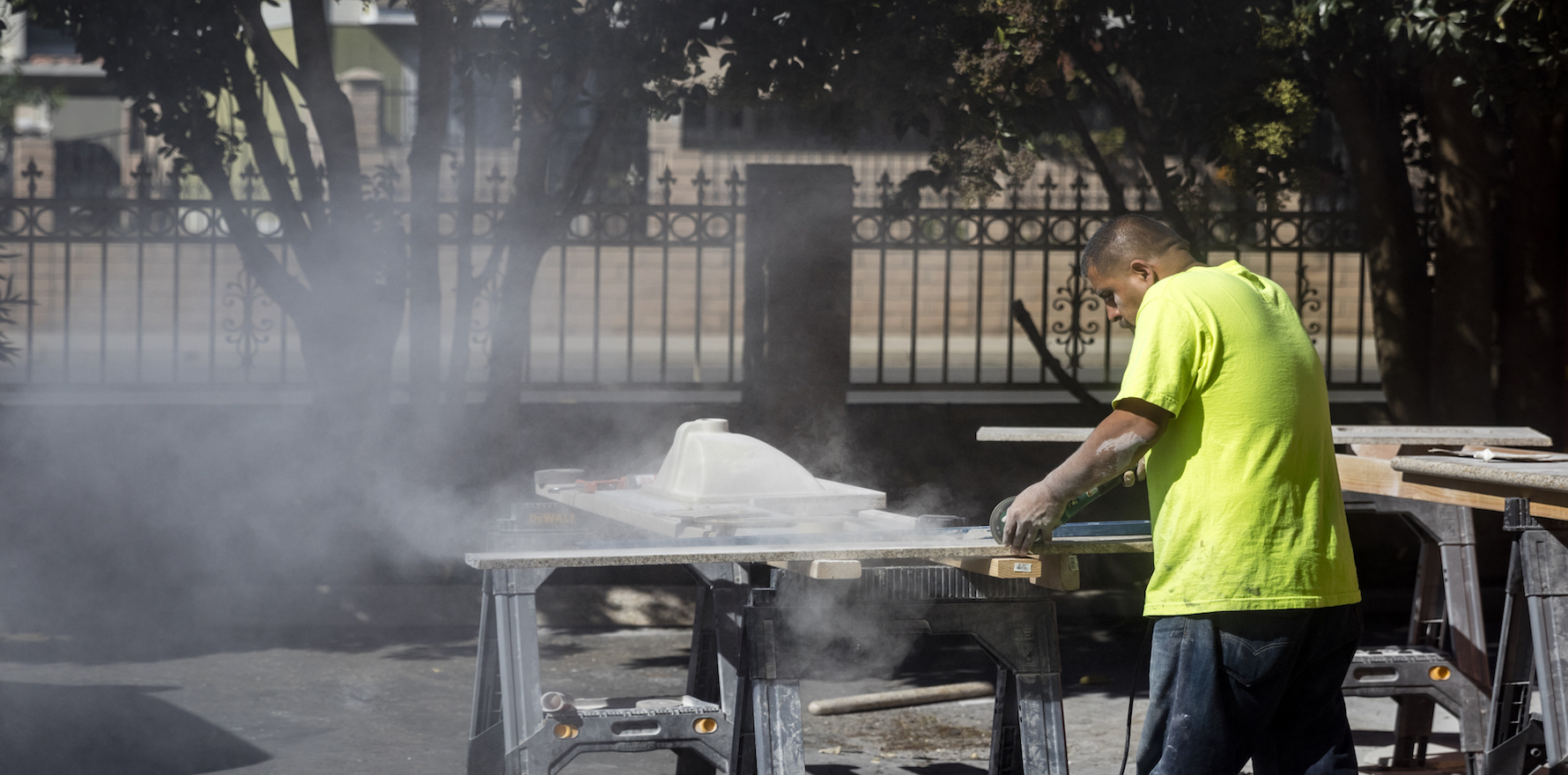And the budget still leaves COPD and respiratory nurses behind, experts say.
Cash to tackle the growing problem of silicosis in the construction and mining industries is good news, but we need national regulations and more research funding, experts say.
The government has set aside $10million to address occupational lung diseases in this year’s budget, including $4.2million to expand the Asbestos Safety and Eradication Agency to include silicosis and silica-related diseases.
That includes $1.2million to increase awareness and reduce exposure to silica dust in workplaces.
“$1.2million is better than a poke in the eye with a blunt stick, but it isn’t enough,” said respiratory researcher Professor Brian Oliver.
Meanwhile, $63.4million has been committed to the national smoking and e-cigarette public health campaigns, he told ARR.
“Sure, there are more people with smoking related diseases currently, but when one in 10 Australians work in the construction industry, it’s hard to know how far the $1.2million could be stretched.”
The head of the respiratory cellular and molecular biology group at the Woolcock Institute of Medical Research said “the most disappointing part” for him was the lack of funding into research.
“Respiratory diseases are obviously a national health priority, with $247million dedicated to public health measures and, let’s face it, prevention is better than cure. But for the people with pre-existing lung diseases it would have been nice to have seen an increase in funding for research.”
Professor Oliver said the silicosis problem was multifaceted, but the key issue was exposure to silicosis in the construction and mining industries, particularly from artificial stone. Anyone working in those industries was vulnerable to developing silicosis, he said.
“There certainly needs to be more research done. And while artificial bench tops are a particular problem, anyone that works in construction and anyone that works in the mine is also vulnerable to developing silicosis. So you can’t just have one approach.”
While there were state-based organisations trying to tackle silicosis, there was no national body to regulate exposure, he said.
“When we research silicosis and when we talk to people, unfortunately a lot of people in the industry have got it into their head that they’re fine because they don’t work on artificial benchtops, they work on granite or onyx, and they think they’re safe.
“But our own research suggests that there’s degrees of danger between different types of dust from benchtops, but none of them are actually safe.”
Lung Foundation Australia CEO Mark Brooke said the investment in strategies to combat silicosis was good news.
“We are so pleased to see that in response to the recent and alarming spike in the number of workers suffering from silicosis and other silica-related diseases, the government will make additional investments to protect workers by implementing and coordinating a strategy with all Australian governments to prevent these debilitating diseases,” he said.
Regarding the funding for a national lung cancer screening program, Mr Brooke told ARR that was “a momentous step forward for all Australians”.
The government announced $267million over four years to implement the program in full and set aside $101million in forward years to continue the program.
“It gives much more than hope, it gives a second chance at life and will save the lives of 12,000 Australians over the next 10 years by diagnosing over 70% of cases at an earlier stage.”
But Mr Brooke said investment in lung cancer nurses and COPD was lacking.
“We continue to advocate for investment in lung cancer nurses, who play a vital role in supporting patients through their lung cancer journey. Investment in lung cancer nurses is currently well below where it needs to be, and funding against other cancer nurses is inequitable.”
Mr Brooke said more investment was needed in lung disease more broadly, and said the Lung Foundation Australia had made recommendations in the Chronic Obstructive Pulmonary Disease Blueprint.
“However, it is an important time to celebrate the announcements that we know will have a positive impact on the 1 in 3 Australians who are currently living with a lung disease, as well as the broader community.
“These funding announcements are wonderful news for our community, 2023 has been a landmark year for lung health addressing stigma, raising awareness on the importance of good lung health, and enhancing equitable access to support services and research investment for lung disease and lung cancer.”


